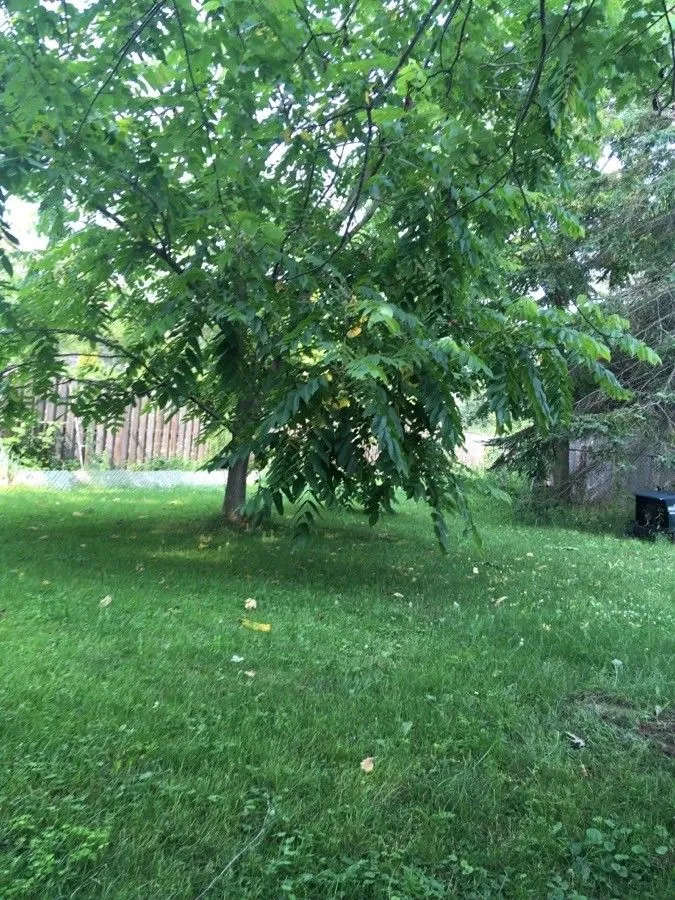
Author: L.
Bibliography: Syst. Nat. ed. 10, 2: 1272 (1759)
Year: 1759
Status: accepted
Rank: species
Genus: Juglans
Vegetable: False
Observations: E. Canada to NC. & E. U.S.A.
The White walnut, known scientifically as Juglans cinerea, is a fascinating and valuable species of tree within the Juglandaceae family. This remarkable tree was first described in the 10th edition of “Systema Naturae” in the year 1759 by the renowned botanist Carl Linnaeus.
Geographically, the White walnut is indigenous to a broad range in North America, extending from eastern Canada to North Carolina and permeating much of the eastern United States. This range highlights the species’ adaptability to diverse climatic conditions and soil types found within these regions.
The White walnut tree is noted for its distinctive bark, which is lighter and more ridged compared to its relative, the Black walnut. Its leaves are compound and pinnate, usually consisting of 11 to 17 leaflets that release a characteristic aroma when crushed.
One of the notable features of this tree is its nut. The White walnut produces elongated, ridged nuts encased in a sticky, green husk. Inside, the nutmeat is sweet and oily, making it a valuable source of food for both wildlife and humans. Historically, Native American tribes and early settlers relied on White walnut nuts for their nutritional value and incorporated them into various culinary dishes.
However, the White walnut is currently facing several threats, the most significant being butternut canker, a fungal disease that has severely reduced its population. Conservation efforts are underway to protect and restore this vital species. These efforts include breeding programs aimed at developing canker-resistant trees and protecting existing groves from further decline.
In addition to its ecological and nutritional importance, the White walnut has also been valued for its timber. The wood is light-colored and relatively soft, used in the past for furniture, cabinetry, and other woodworking projects. Its unique grain pattern and workability make it a favorite among craftsmen despite its relative scarcity today.
Overall, Juglans cinerea, or the White walnut, holds a crucial place in North America’s natural and cultural heritage. As research and conservation efforts progress, there is hope that this venerable tree will continue to thrive for future generations to study, admire, and utilize.
Deu: butter-walnuss, butternuss, butternußbaum
Eng: butternut, white walnut
Dan: grå valnød
Lit: pilkasis riešutmedis
Swe: grå valnöt
Spa: nogal ceniciento
Fra: noyer cendré, arbre à noix longues, noix longues, noix tendre
Lav: pelēkais riekstkoks
Nno: smørvalnøtt, smørnøtt
Nob: smørvalnøtt, smørnøtt
En: White walnut, Butternut, Butternut Tree
Ar: جوز أرمد
Be: Арэх шэры
Zh: 胡桃胡椒
Cs: Ořešák popelavý
Da: Grå valnød
Et: Hall pähklipuu
Fi: Amerikanjalopähkinä
Fr: Noyer cendré, Arbre à noix longues, Noix longues, Noix tendre
De: Butternußbaum, Butternuss, Butter-Walnuss
He: אגוז חמאה
Hu: Szürke dió
Ga: Imchnó
Ko: 백호두나무
Lv: Pelēkais riekstkoks
Lt: Pilkasis riešutmedis
No: Smørvalnøtt
Nb: Smørvalnøtt, Smørnøtt
Nn: Smørvalnøtt, Smørnøtt
Oj: Bagaanaak, Bagaanaakomizh, Bagaanaakomizhiig, Bagaanaakwag
Fa: گردوی سفید
Pl: Orzech szary
Ru: Орех серый
Es: Nogal ceniciento
Sv: Grå valnöt
Uk: Горіх сірий
Taken Mar 5, 2016 by EOL − owenclarkin (cc-by-nc)
Taken Jul 28, 2021 by ali_vern (cc-by-sa)
Taken Jun 18, 2022 by yvon s (cc-by-sa)
Taken Jun 9, 2022 by Chen Mary (cc-by-sa)
Taken May 16, 1990 by Daniel Barthelemy (cc-by-nc)
Taken Apr 1, 1993 by Daniel Barthelemy (cc-by-nc)
Taken Jan 1, 1900 by EOL − Wayne Ray (public)
Taken Jan 1, 1900 by EOL − Steven Katovich, USDA Forest Service (cc-by)
Taken Apr 1, 1993 by Daniel Barthelemy (cc-by-nc)
Taken Apr 3, 1991 by Daniel Barthelemy (cc-by-nc)
© copyright of the Board of Trustees of the Royal Botanic Gardens, Kew.
Taken Jan 4, 2021 by Karla Borecky (cc-by-sa)
Taken Jun 18, 2022 by yvon s (cc-by-sa)
Taken Aug 21, 2020 by Carvalho Leandro (cc-by-sa)
Taken Dec 4, 2020 by jean-francois cote (cc-by-sa)
Taken Aug 5, 2021 by Richer Fortin (cc-by-sa)
Taken Aug 18, 2019 by Dieter Albrecht (cc-by-sa)
Taken Aug 5, 2021 by Raymond Carr (cc-by-sa)
Taken Jul 11, 2021 by marie frances (cc-by-sa)
Taken Jul 6, 2019 by Bill McKnight (cc-by-sa)
Taken Jul 27, 2015 by EOL − Mike Leveille (cc-by-nc)
Taken Aug 22, 2022 by Evan Prodromou (cc-by-sa)
Taken Sep 1, 2017 by Ken Schafer (cc-by-sa)
Taken Aug 1, 2013 by EOL − Kyle Jones (cc-by-nc)
Taken Sep 11, 2019 by Laura Laura (cc-by-sa)
Taken Jun 20, 2020 by Michele Brickham (cc-by-sa)
Taken Apr 1, 2020 by Jorge Pina (cc-by-sa)
Growth form: Single Stem
Growth habit: Tree
Growth rate: Rapid
Ph maximum: 7.0
Ph minimum: 6.0
Family: Myrtaceae Author: (F.Muell.) K.D.Hill & L.A.S.Johnson Bibliography: Telopea 6: 402 (1995) Year: 1995 Status:…
Family: Rubiaceae Author: Pierre ex A.Froehner Bibliography: Notizbl. Bot. Gart. Berlin-Dahlem 1: 237 (1897) Year:…
Family: Sapindaceae Author: Koidz. Bibliography: J. Coll. Sci. Imp. Univ. Tokyo 32(1): 38 (1911) Year:…
Family: Asteraceae Author: A.Gray Bibliography: Pacif. Railr. Rep.: 107 (1857) Year: 1857 Status: accepted Rank:…
Family: Fabaceae Author: Medik. Bibliography: Vorles. Churpfälz. Phys.-Ökon. Ges. 2: 398 (1787) Year: 1787 Status:…
Family: Aspleniaceae Author: (Cav.) Alston Bibliography: Bull. Misc. Inform. Kew 1932: 309 (1932) Year: 1932…